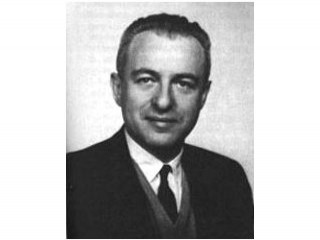
Oscar Lewis biography
Date of birth : 1914-12-25
Date of death : 1970-12-16
Birthplace : New York, U.S.
Nationality : American
Category : Arhitecture and Engineering
Last modified : 2012-02-10
Credited as : anthropologist, study of culture change,
The American anthropologist Oscar Lewis was concerned with the study of culture change and was the originator of the "culture of poverty" concept.
Oscar Lewis was born in New York City in 1914. The son of a rabbi, he was raised in upstate New York and majored in history at the City College of New York. After receiving his B.A. in history in 1936 he matriculated as a history student at Columbia University. Becoming somewhat disaffected from the history then taught at Columbia, he followed the advice of his wife's brother, Abraham Maslow, and had a long talk with Ruth Benedict of the Anthropology Department. Attracted by the field and by Benedict, he switched departments. Among those at Columbia who influenced him, in addition to Ruth Benedict, were Ralph Linton and Margaret Mead.
Lewis was poor, and there was little financial aid available at the time. Therefore, his dissertation research was done in the library, rather than in the field, and combined history and anthropology. Receiving his degree in 1940, his dissertation on the effects of white contact on the Blackfeet Indians was published in 1942. That year Lewis worked for the Human Relations Area Files in New Haven, and in 1943 he went to Mexico as a U.S. representative of the Interamerican Indian Institute to work with Manuel Gamio and Juan Comas. Lewis conducted his first field work in Tepoztlan during these years, thereby beginning a life-long association with Latin America.
Upon his return to the United States Lewis worked for the U.S. Department of Agriculture as a social scientist. Briefly on the faculties of Brooklyn College and Washington University, Lewis was appointed to the faculty at the university of Illinois in Champagne-Urbana in 1948, starting the anthropology program there. Lewis served briefly as a consultant to the Ford Foundation in India, and while in this post he recruited a number of Indian students and directed an ethnographic study of a village in India.
Lewis's research in Tepoztlan was in a village made famous earlier by the pioneering work of Robert Redfield. When Lewis published a book on Tepoztlan, it roused a considerable controversy for it was critical of Robert Redfield's findings. Redfield was not disturbed by this, but many other people were. Lewis had paid a great deal of attention in this study to economics and factional politics. An offshoot from this research developed into the major thrust of the rest of his career—the study of poor people by means of a detailed investigation of a small number of individuals in the family setting.
The first major publication with this focus was Five Families, about families who lived in Mexico City. This was followed by The Children of Sanchez and later by several other books on various members of and events in the Sanchez family. He also published a lengthy study of Pedro Martinez, a resident of Tepoztlan. Subsequently he added an interest in Puerto Rican poor people, both in Puerto Rico and in New York, and he was working on a study of Cuba when he died without warning at age 56.
Lewis is probably best known for his "culture of poverty" concept, which evolved from his work on poor families in Mexico. The basic idea was that the poor had a culture of poverty which in effect kept them poor. Thus a culture of poverty would be reproduced by generations of the poor and would last for some time even if the individuals or families were able to work themselves out of economic poverty. The concept of culture of poverty has been strongly attacked on conceptual grounds by Anthony Leeds in 1971 and earlier on other grounds as well by Charles Valentine (1968).
While Oscar Lewis is most well known for the culture of poverty concept, several of his other accomplishments were much more lasting. A major contribution was his study of variation in a peasant village. Much of anthropology had been presented as if a village, culture, or tribe were homogeneous and the important variation was that found between villages, tribes, etc. Redfield's account of Tepoztlan presented the village as essentially homogeneous. Lewis protested that there were wealth differences within the village, that there were profound political disputes and differences, and that these differences were important for an understanding of Tepoztlan, and by extension of any peasant village. Many subsequent accounts of peasant villages have described such differences or at least taken them into account.
















